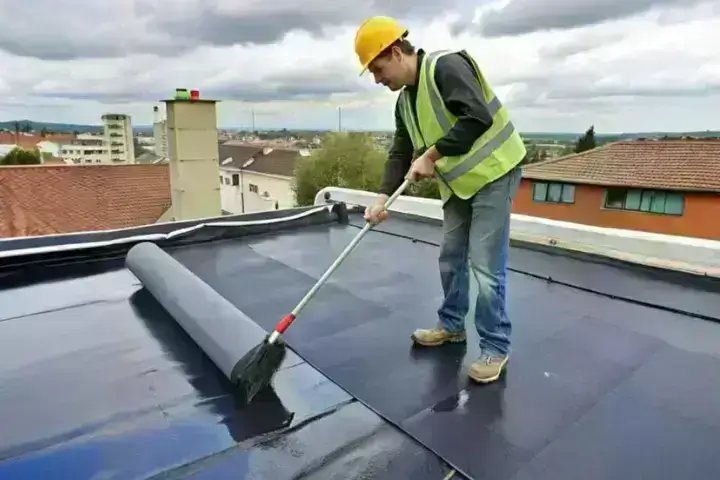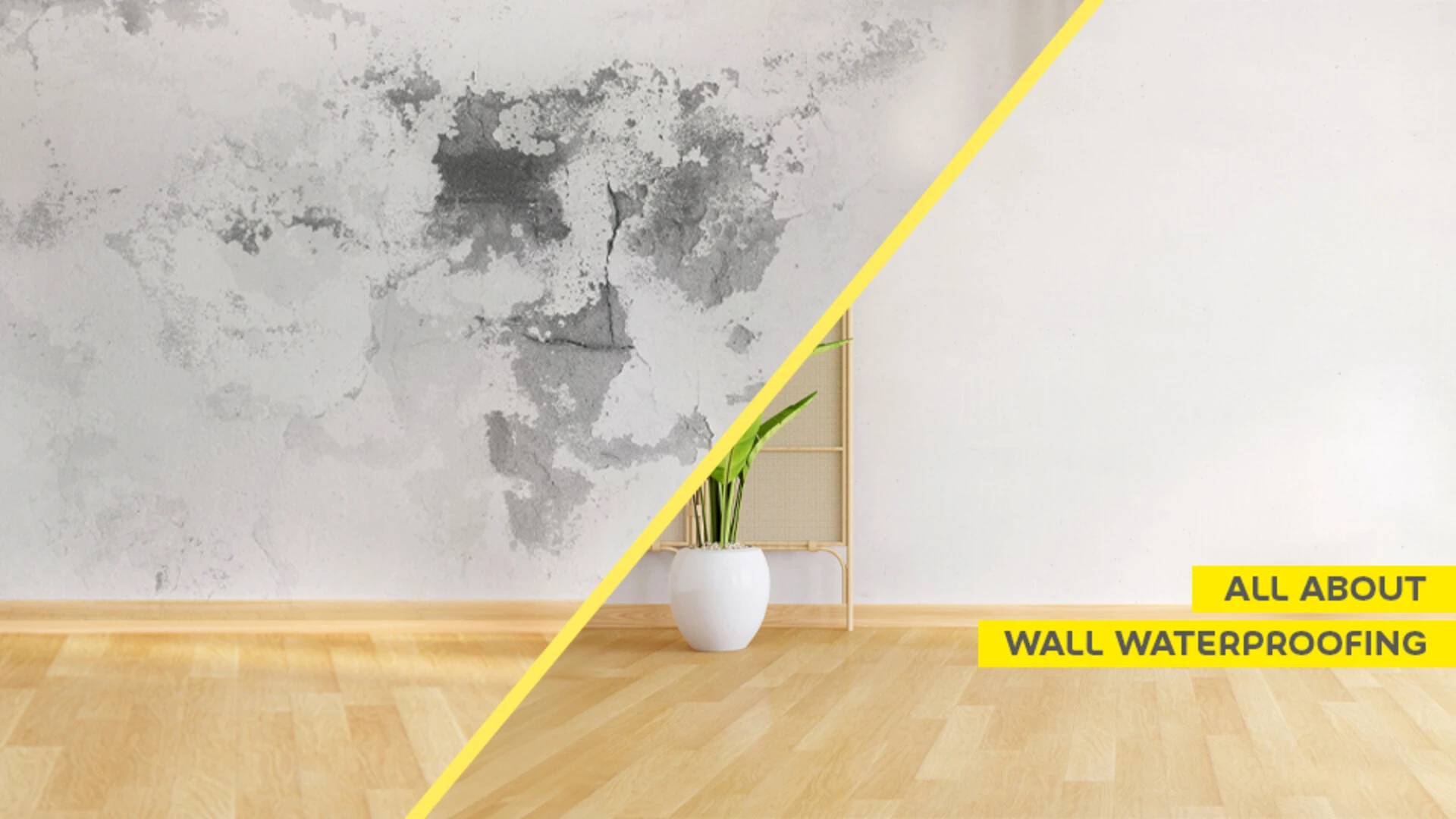Sorts of Waterproofing: Checking Out the Numerous Methods and Their Applications
Waterproofing is an important aspect of construction and maintenance. It safeguards frameworks from the destructive effects of water damage. There are several methods offered, each with its distinct applications and advantages. From membrane systems to cementitious options, recognizing these choices is vital for effective application. The choice of waterproofing method can significantly influence sturdiness and longevity. Checking out these numerous strategies discloses their distinct advantages and prospective difficulties, prompting more consideration of perfect remedies.
Membrane Waterproofing Systems
Membrane layer waterproofing systems serve as a vital barrier versus water breach in various structures. These systems normally contain thin sheets made from materials like rubber, thermoplastic, or bitumen, which are put on surface areas to prevent moisture infiltration. They can be mounted above or below grade and are specifically effective in areas susceptible to high water direct exposure, such as cellars, roof coverings, and foundations.The installment process includes cleaning up the substratum, using adhesives or guides, and specifically suitable the membrane to ensure full insurance coverage. Membrane layer systems can be either totally stuck, mechanically attached, or laid loose, depending upon the certain requirements of the job. They offer durability and versatility, suiting structural movements without endangering their waterproofing abilities. These systems can be strengthened with additional layers for boosted defense. Eventually, membrane waterproofing systems are vital for safeguarding frameworks against water damages and keeping long-term honesty.
Liquid-Applied Waterproofing Coatings
Liquid-applied waterproofing finishings supply a versatile solution for protecting surfaces from water infiltration - Water Solutions. These coatings are composed of fluid products that, when used, form a seamless, flexible membrane layer. Their adaptability permits application on various substrates, including concrete, metal, and wood. The coverings can be used in diverse atmospheres, from domestic to industrial setups, making them appropriate for roofing systems, structures, and below-grade structures.One considerable advantage of liquid-applied layers is their ability to comply with irregular forms and penetrate splits, developing a durable obstacle against dampness. They usually display excellent attachment homes and resistance to UV radiation, making certain longevity and longevity. Additionally, the application procedure is usually straightforward, enabling fast installment and lowered labor costs. This approach additionally lessens the threat of water merging, as the continual layer efficiently routes water away from prone locations. In general, liquid-applied waterproofing finishings are an efficient choice for detailed water protection
Cementitious Waterproofing Solutions

Cementitious waterproofing solutions supply a durable option for frameworks requiring trustworthy wetness security. These systems mainly make use of a blend of cement, sand, and chemical additives to produce a water resistant barrier. They are commonly put on surfaces such as concrete walls, foundations, and floorings, supplying a long lasting, lasting defense cement based waterproof coating versus water intrusion.One of the key benefits of cementitious waterproofing is its ease of application; it can be used using a brush, roller, or spray, making it ideal for numerous task dimensions. In addition, this approach is suitable with lots of surfaces and can usually be utilized combined with other waterproofing techniques.Cementitious services are especially efficient in environments where water exposure is a concern, such as cellars or below-grade frameworks. Their superb attachment residential properties assure that they bond well with substrates, offering a solid and impenetrable layer against moisture penetration.
Bentonite Waterproofing
Bentonite waterproofing see it here is an extremely effective technique that utilizes sodium bentonite clay to create an all-natural obstacle versus water. This technique makes use of the unique buildings of bentonite, which expands upon contact with water, securing any type of potential leaks and stopping wetness seepage. It is typically made use of in different applications, including foundation walls, passages, and retaining walls, where water resistance is essential.Bentonite can be applied in a number of forms, such as panels or blankets, supplying adaptability in installment. Its ability to self-seal makes it an appealing alternative for locations based on shifting dirt or rising and falling water degrees. Furthermore, bentonite waterproofing is eco pleasant, as it is an all-natural product that does not introduce unsafe chemicals into the environments.
Drainage and Exterior Waterproofing Solutions
Effective waterproofing frequently involves a combination of strategies, consisting of water drainage and exterior systems. Drain systems, such as French drains and sump pumps, are developed to reroute water away from structures, reducing hydrostatic stress versus structures. These systems are essential in preventing water buildup that can bring about structural damages and mold growth.External waterproofing, on the other hand, entails using protective obstacles to the building's exterior. Strategies such as the setup of water-proof membrane layers, coverings, or sealers can aid prevent water infiltration. This method not just protects the foundation however likewise improves the general toughness of the structure.Together, drainage and exterior waterproofing systems create a complete option to handle water successfully. By executing these approaches, homeowner can secure their financial investments versus the harmful effects of moisture, making certain lasting security and safety for their buildings.
Often Asked Inquiries
Exactly how Do I Select the Right Waterproofing Approach for My Task?
Selecting the appropriate waterproofing method depends on elements such as task kind, ecological conditions, budget, and preferred longevity. Reviewing these aspects enables educated choices tailored to click this site certain needs and needs.

Can Waterproofing Be Applied in Winter Issues?
Waterproofing can be applied in cool weather condition conditions, yet it needs details materials and techniques. Cold temperatures might affect treating times and adhesion, requiring cautious choice of items created for low-temperature application.
What Are the Common Indications of Waterproofing Failure?
Common indicators of waterproofing failing include visible water spots, peeling paint, damp odors, mold development, and fractures in walls or foundations. Foundation waterproofing Omaha. These signs suggest that moisture is permeating the barrier, jeopardizing its efficiency
For How Long Does Waterproofing Last Before Needing Maintenance?
The durability of waterproofing differs, normally lasting between 5 to ten years. Aspects such as worldly high quality, environmental conditions, and maintenance techniques affect its durability, requiring regular evaluations to guarantee reliable defense against water intrusion.
Exist Eco-Friendly Waterproofing Options Available?
The inquiry of environment-friendly waterproofing options reveals an expanding interest in sustainable products (Sump pump installation & replacement Omaha). Numerous natural substances, such as plant-based sealants and recycled products, offer efficient solutions while reducing ecological effect, appealing to environmentally conscious customers